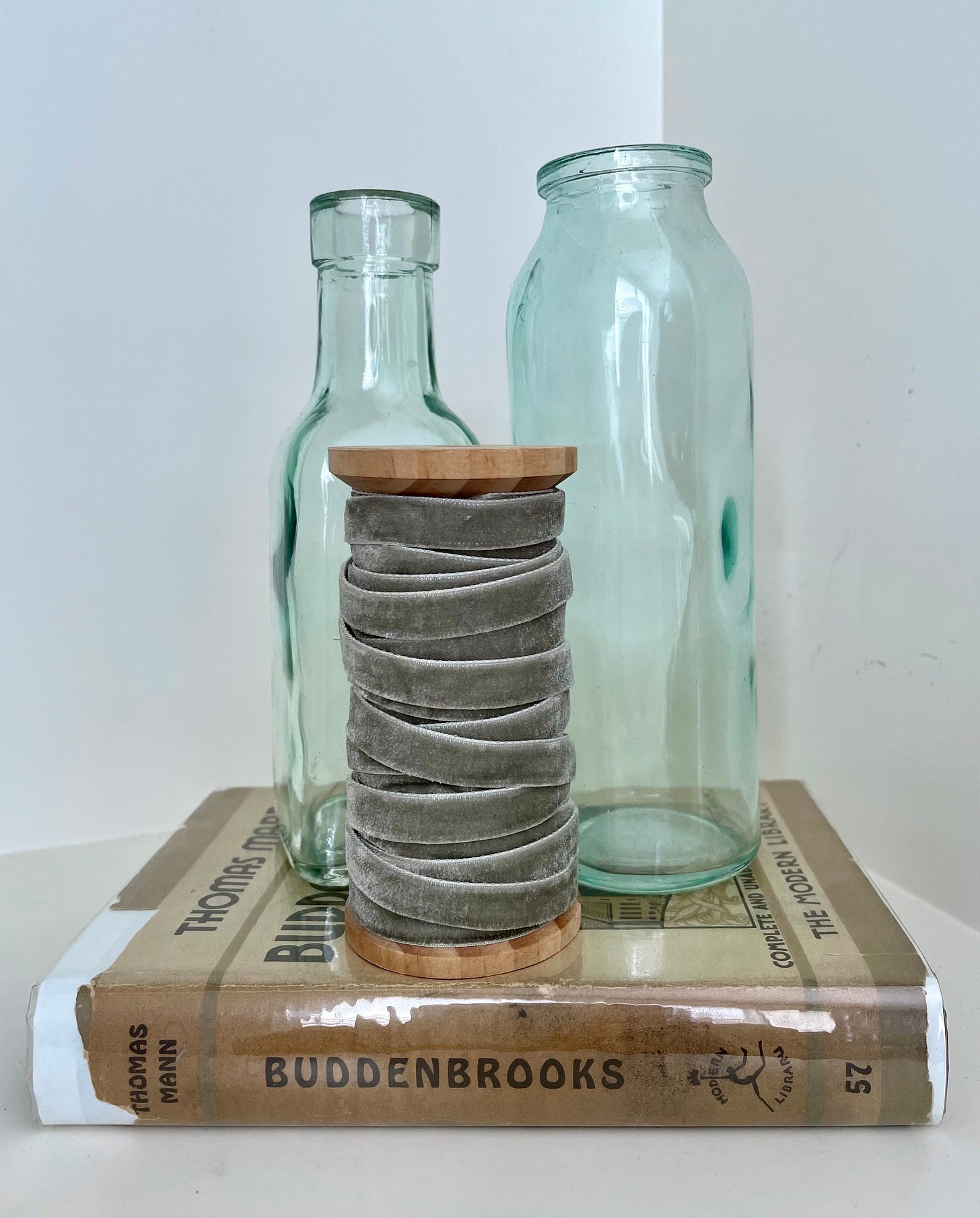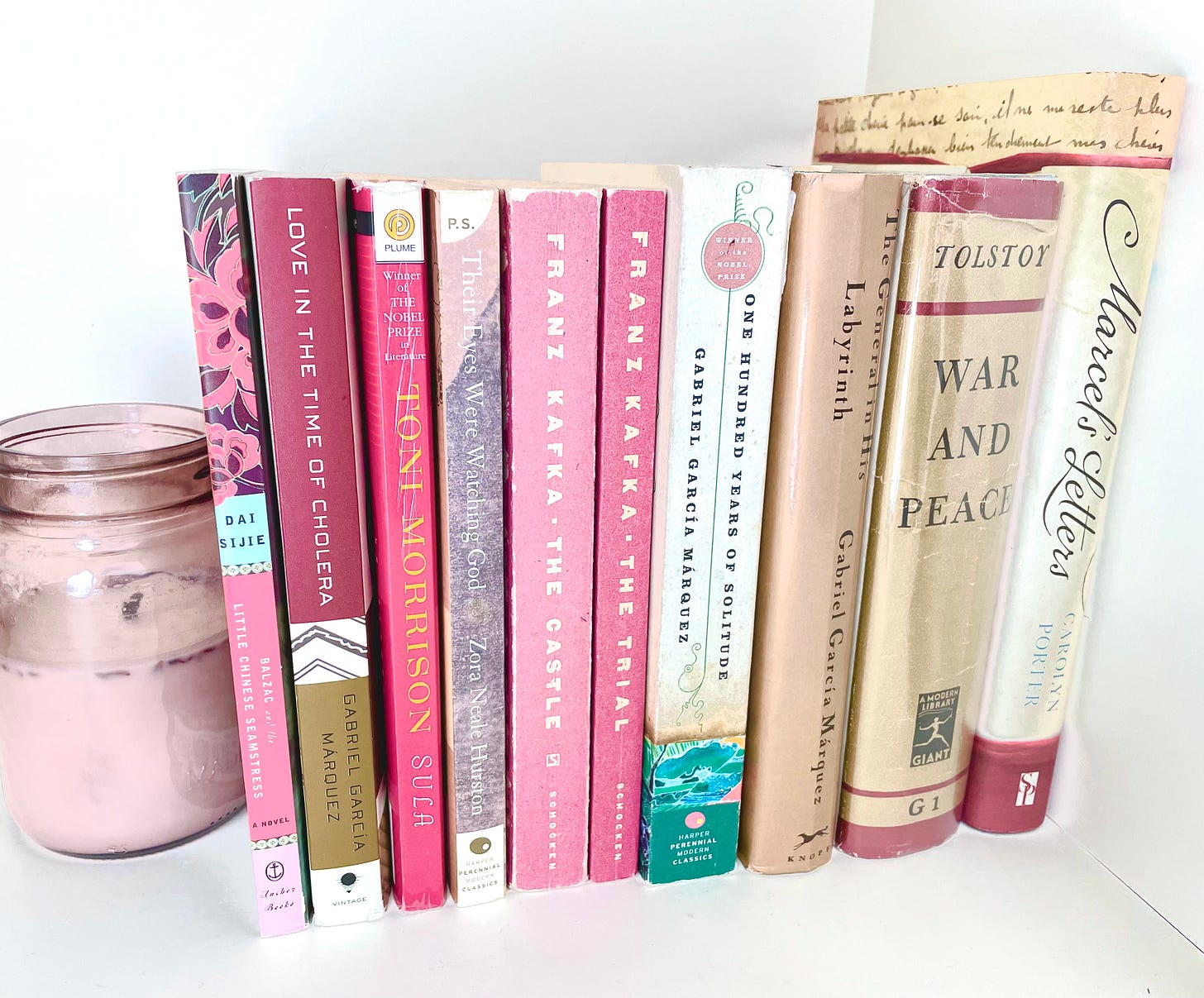How to Arrange Books (as objects) and Words (into books)
A Pep Talk on the Art of Daily Grappling
I am writing to you from my birthday month—a month that, for me, tends to anchor both the summer and the calendar year. This summer, I’m revising my novel, which I decided to unearth after resting it for 18 months.
Faced with the decision of whether to spend my summer months revising my novel or continuing to draft my book in essays, my therapist presented me with a useful framework that helped me weigh the two paths. I’ll write about this framework in a future post … but for now, it’s enough to know the scales tipped in favor of my novel.
In addition to working on my novel, I’ve been rearranging my book collections. A photo of my books stacked in disarray on Instagram (@heidifettigparton) spurred on a fun discussion about how friends/followers arrange their books. Former librarians and bookstore professionals chimed in (and you can still weigh in over on Instagram!).
I’m happy to announce that my book reorganization project is nearly complete.
I’ve reshelved my books by genre and trim size, with color factoring in (only a bit!) for the first time. I’ve learned many of you alphabetize, which must make finding books quite efficient. Unfortunately, I am too fixated on color and trim size to ever alphabetize. My book vignettes (some pictured in this post) even mix genres (gasp!).
Book vignettes are how I decorate my house. Book vignettes are simply meaningful books placed together in small displays—such as my first vintage Modern Library hardcover (Marcel Proust’s Swann’s Way) that I purchased at a street market in Regensburg, Germany in 1989. Or my first edition copy of Truman Capote’s In Cold Blood (a homerun gift from my husband). Or a copy of my friend Carolyn Porter’s beautiful memoir, Marcel’s Letters that I wrote about for Brevity’s blog.
In addition to the vignettes, I have bookshelves throughout the house that hold the bulk of my collections. While the shelves remain relatively stable (other than the random book pulled out that, later, gets reshelved in a different location), these vignettes are always changing. Most days, I spend a few minutes contemplating my book vignettes while drinking a cup of tea and planning my day. Invariably, at least one book gets moved around or a different candle comes in, or a jar of old marbles finds a new home on a stack of books.
This is the same way I’ve been working on revisions of my fourth (or fortieth, depending on how I choose to look at it) draft of my novel. I’ve committed to spending a minimum of five minutes with my novel every day. This way, my subconscious mind is always grappling with the issues facing me in the book, the choices, the problems that need fixing. For example, by sitting with my book each day, I find myself waking up at three in the morning to discover the solution to the nagging issue in Chapter 4 that crops up again in Chapter 18.
I encourage you, even if you have very little time right now, to engage with your book revision—or other goal project—a small amount everyday. I’m not saying you’ll finish your book in five minutes a day (but I’m also not saying you won’t). What I am promising is that, with this daily grappling, your book will start to talk to you, even when you’re not with it. When this begins to happen, you’ll know you’re on the right track and, it will feel fabulous!
I should mention that I’ve used this same method for first drafts as well. When first drafting, I usually set the requisite amount of touch-the-project time at 15 minutes. The beauty is, whether it’s 5 or 15 minutes, most days, I’ll end up putting in more time—but the basic minimum is a good way to counter the “I don’t have time to do this/project avoidance” obstacle that tends to arise anew each day.
Note: If you do have to break the chain of days (family crisis, illness, trip etc.), just begin linking days again as SOON as you can. Remember, it’s only five minutes!
Idea: Buy some gold foil stars (you can find these in the back-to-school aisle right now or online) and give yourself a gold star on a chart or calendar for each day you touch your project!
Thanks for reading. I invite you to sign up to receive a new Writing with Presence in your email box each month.
Discover more of my writing at my website: www.heidifettigparton.com.





I love the idea of “book vignettes”! I’d call them a variation of an altar. Our condo overlooks the Ohio River, and now I know what to call the book of river poems and another of river essays are that stacked on an end table.
My mother read nothing but romance novels and arranged the books by color….all pastels. I couldn’t look at it without laughing.